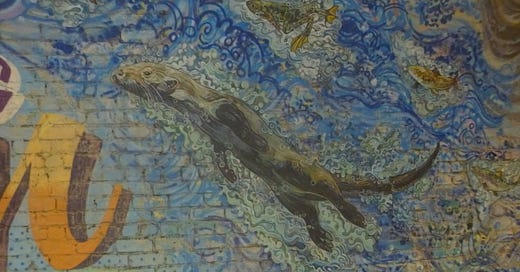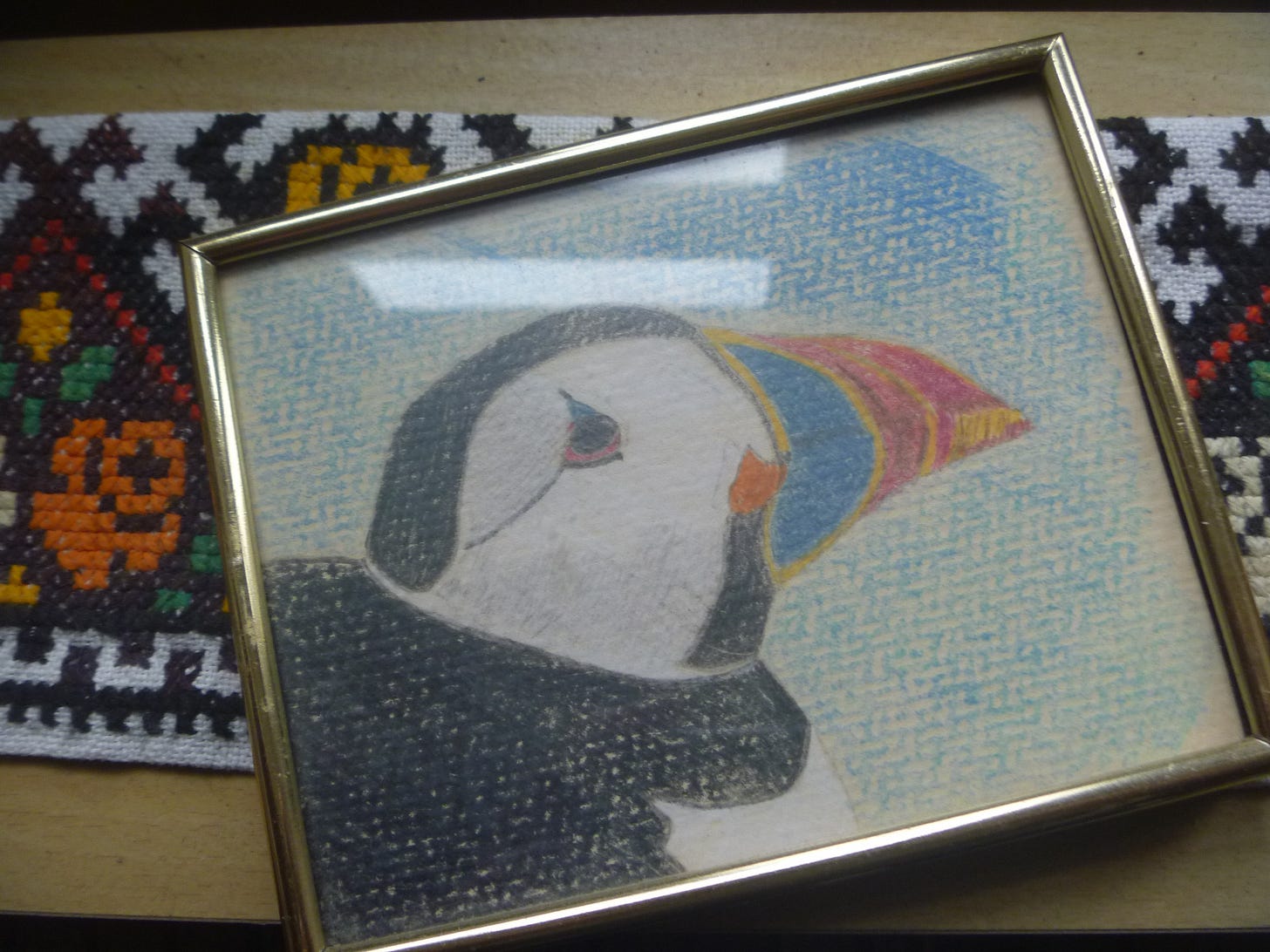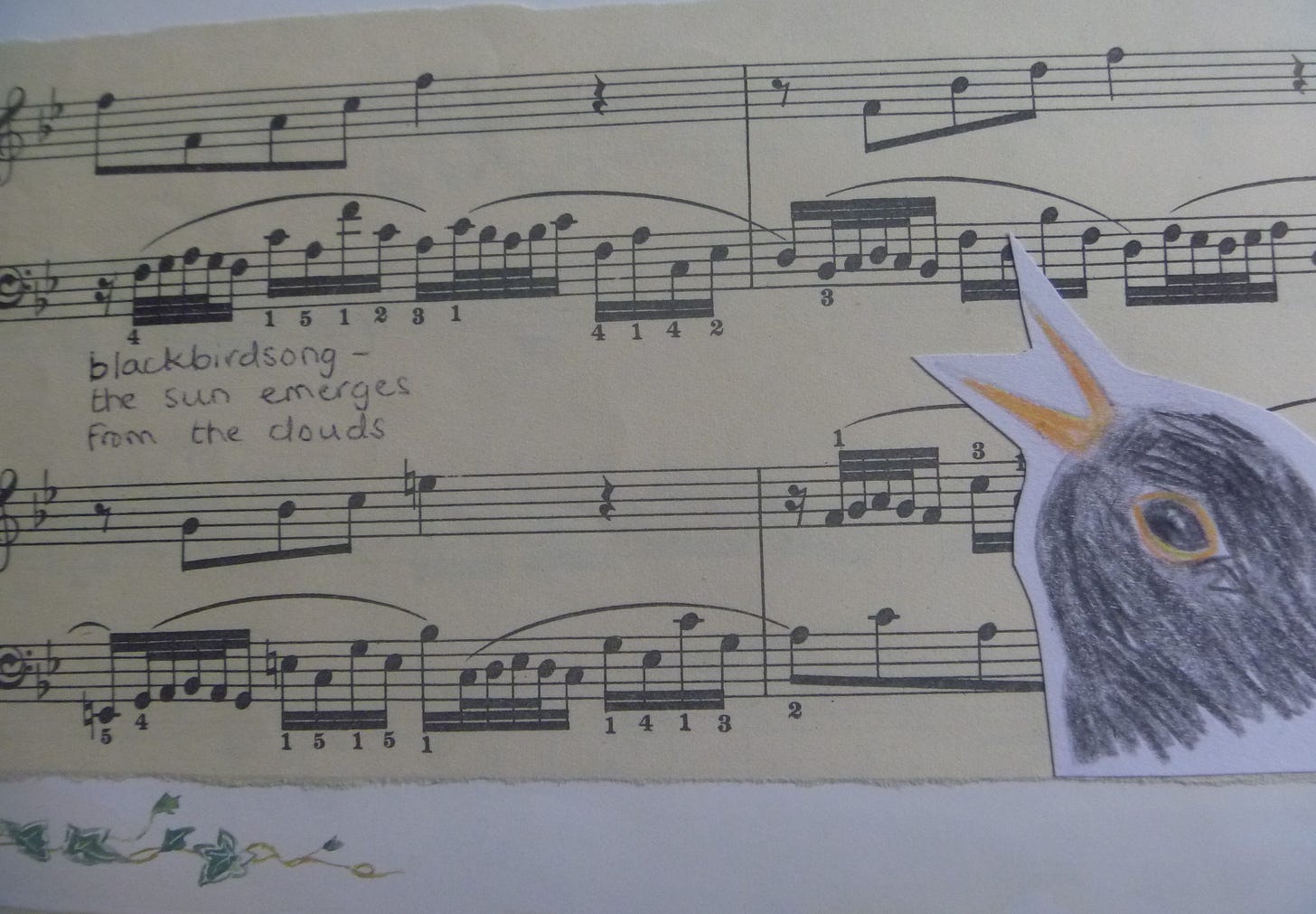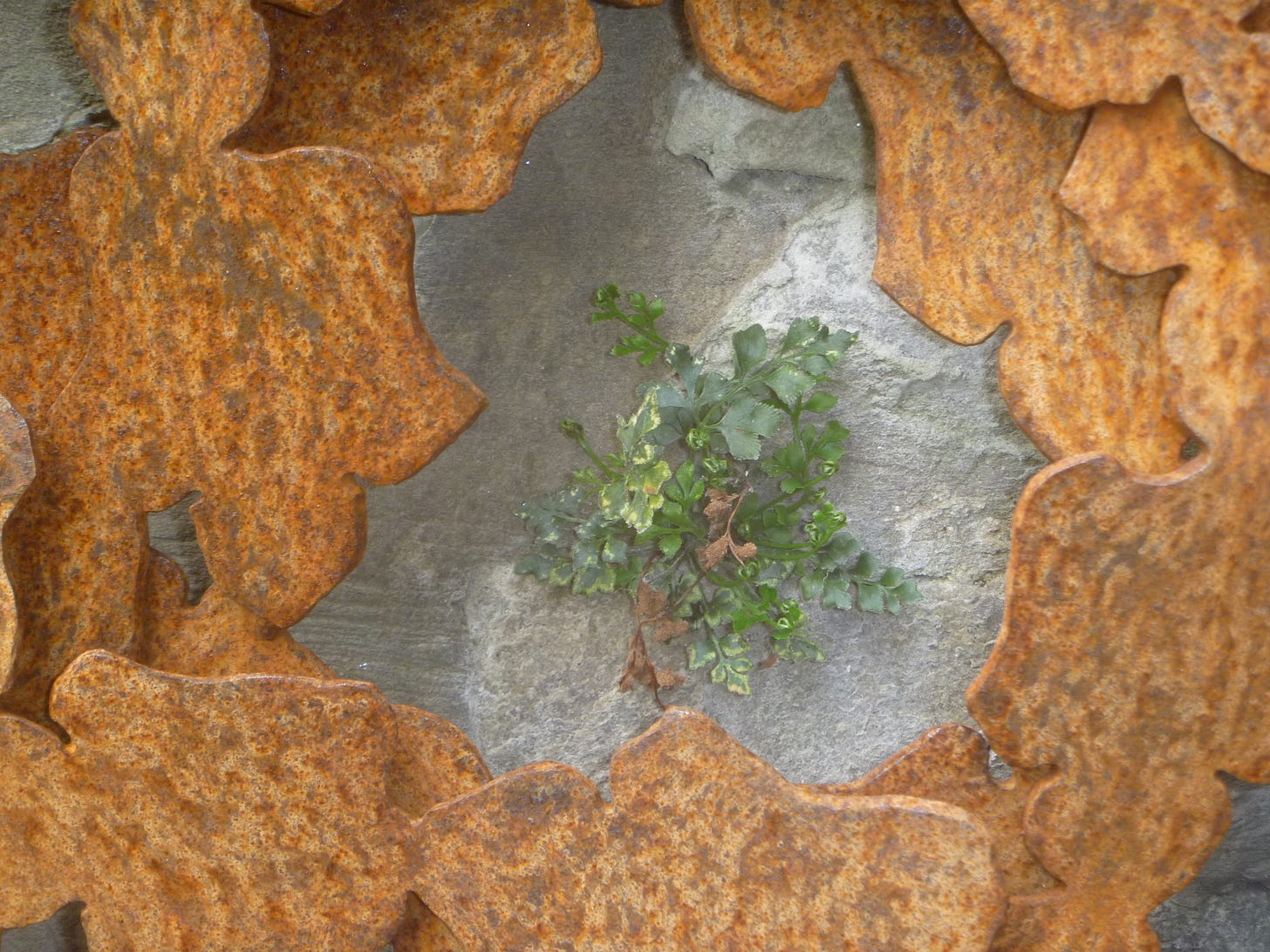We’re now coming to the end of 30 Days Wild, the annual campaign from The Wildlife Trusts to get people involved with nature.
So far in this series, I’ve written about enjoying and observing nature, learning about nature and helping nature. In this post, I want to share some creative responses to nature.
Art can be a great way of becoming more involved with nature on a personal level, by, for example, drawing the plants and animals you see around you. It can also be a successful way of engaging people, who otherwise might not be interested in nature, especially if it is straightforward, accessible public art. (I can enjoy difficult art, but I tend to think public art should be easily understandable, especially if it’s intended to draw people in on a particular topic).
My favourite piece of nature related public art in Edinburgh is the wonderful Colinton Tunnel mural, painted by Chris Rutterford (with help from community groups and school groups). This tunnel runs alongside the Water of Leith and the mural celebrates the poetry of Robert Louis Stevenson (who used to live locally) and the wildlife of the river, including the otters.
The tunnel is an example of the best kind of public art, it’s beautifully made, it’s in a place where lots of people pass through; it was made involving local people and it celebrates the local area.
My own creative responses to nature are usually in the form of words, particularly haiku and other poetry. However I do also enjoy drawing and making collages. I recently came across this picture of a Puffin that I drew many years ago, but have now framed
I like to include my haiku in collages. Below, for example, is a collage I made using some old music, a hand-drawn blackbird and featuring my haiku -
blackbirdsong -
the sun emerges
from the clouds
As a result of this post, in fact, I’m now working on a few more collages!
I’m always interested to see other people’s artwork that focuses on nature or environmental issues. There are many people here on Substack who share creative responses to nature and there’s not space to mention them all, so just a couple of mentions:
I loved looking through the photos, recently shared by Kay Hale, of her mixed media journal pages, many of which feature images from nature:
Ali Edwards, from Drawn to Nature not only shares her own drawings but shares ideas for how to develop your own nature inspired drawings, offering regular challenges to get involved in:
Also a quick mention to Holly who very recently launched her Substack ‘Shutter Squirrel’ with this excellent introduction to wildlife photography:
Many plants have been used as inks and fabric dyes. Edinburgh based artist Julie Galante has recently been creating inks using foraged plants and kitchen scraps. Some of the resulting artworks can be seen in her exhibition Painting with Plants on show at Edinburgh’s Stockbridge Library (this small exhibition is hidden away at the back of the library and could easily be missed). Another exhibition that’s well worth checking out is The Living Earth, beautiful paintings of landscapes by Pascale Rentsch, that is showing upstairs at The Scottish Gallery in Edinburgh’s Dundas Street, while downstairs in the same gallery the artwork includes the beautiful botanical linoprints of Angie Lewin, the nature inspired collages and fabrics of Mark Hearld, the willow sculptures of Lizzie Farey and the nature themed ceramics of Katie B Morgan, Terry Shone and Jill Fanshaw Kato. All these exhibitions are showing until 28 June. The Scottish Gallery also has a beautiful little garden, which is open in good weather and has artworks on display. I particularly love the piece below by Andrea Geile, which includes a beautiful Wall-rue fern as part of the artwork.
There’s a wealth of music inspired by nature too. I recently found out about Konstantine Vlasis, who was inspired by the music of Icelandic band Sigur Ros and the lyrics of traditional Icelandic songs to record the sounds of glaciers and to use them to inspire climate action. Vlasis hopes that his research will “highlight the urgency of tackling climate change, and that his unique audio documentation of Iceland's frozen landscapes will help raise awareness of glacial melt.” Read more about this inspiring art-science collaboration on the BBC website here.
Musician David Gray is the patron of the charity Curlew Action, which aims to conserve these iconic and threatened wading birds. His beautiful album Skellig was released to highlight curlew awareness, though the songs cover a wider range of topics.
This post can only begin to give a picture of how much art is inspired by nature! As a naturalist and a writer, I’m always inspired to see and hear people’s creative responses to the natural world. During the remaining days of 30 Days Wild, you may want to try out your own creative responses to nature. You could:
carry your camera with you and take photos of interesting plants and insects you see;
sketch or paint landscapes, seascapes or gardens;
write haiku or other poetry inspired by nature;
start keeping a nature journal, which could include notes, sketches and poetry.
What’s Happening?
Insect Week (23 - 29 June 2025)
Take part in insect science, get to know insects, learn from experts, and have fun.
Swift Awareness Week (28 June to 6 July 2025)
Join walks, talks and events with Swift experts and enthusiasts to enjoy watching these extraordinary (and sadly declining) birds and find out more about them.
Coming Soon! Big Butterfly Count: (18 July - 10 August)
Take part in Butterfly Conservation's Big Butterfly Count - a UK wide survey, and help assess the health of our environment simply by counting butterflies.
What I’m Reading
A Single Swallow by Horatio Clare - the author follows the journey made by Barn Swallows as they migrate from South Africa to South Wales.
I’ve Been Published
I’m delighted to have two haiku in the Water themed Issue 5 of Folk Ku Journal.
And even more delighted to have won the Gaelic section of the Scottish Book Trust 50 word short story competition!











Brilliant ideas and links here Juliet. Agus Meall do Naidheachd!
thanks for including me! I love your collages!